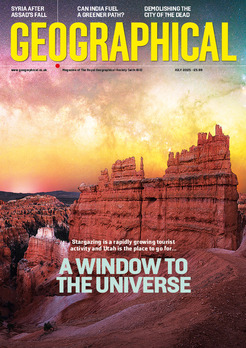
Beneath Tenerife’s stark beauty lies a hidden threat: its volcanic landscape poses a danger to tourists
Tenerife, the Canary Island where the body of 19-year-old Jay Slater was found earlier this week, has deceptively dangerous terrain. Green valleys wind through solidified lava flows below Mount Teide, Spain’s highest peak at 3,715m. The landscape, a labyrinth of potential dangers, made the search for the British teenager extremely demanding.
The island’s treacherous nature stems from its geology and its geography. Mount Teide’s volcanic ash creates a loose, uneven surface that makes navigating even well-worn paths a challenge. Poorly marked trails, often obscured by loose rock and vegetation, can vanish entirely under the cloak of thick fog that rolls in unexpectedly from the surrounding Atlantic Ocean. Disoriented hikers, suddenly enveloped in a white void, can find themselves lost within minutes, retracing their steps only to find familiar path vanished.
Flash floods, a very real danger in Tenerife’s arid climate, can transform dry ravines into torrents in a matter of minutes. These sudden bursts of water have been responsible for sweeping unsuspecting hikers off their feet and carrying them away.

Eleven people have been reported missing on the island within the past six months. Official data from the Spanish Ministry of the Interior states that between 2020 and 2023, at least 460 adults went missing in the Canary Islands, from a population of just 2.2million.
Tenerife is the largest and most populous island of the Canary Islands. It is home more than 42 per cent of the total population of the archipelago. With a land area of 2,034.38 square kilometres and a population of 948,815 inhabitants as of January 2023. It is Spain’s most populous island.
Approximately five million tourists visit Tenerife each year; it is the most visited island in the archipelago. It is one of the biggest tourist destinations in Spain and therefore one of the largest tourist destinations in the world.

The Teide National Park covers much of the centre of the islands and is a UNESCO World Heritage Site. Mount Teide is not only Spain’s highest mountain, but it also the highest in all the islands in the Atlantic Ocean. It is also the third-largest volcano in the world, when measured from its base. Another geographical feature of the island, the Macizo de Anaga (massif), has been designated as a UNESCO Biosphere Reserve since 2015.
Hikers exploring the rugged interior should plan their routes meticulously, use well-marked trails, and frequently check weather forecasts. They should always carry essentials such as water, a map, and a compass and let someone know planned route and estimated return times.
Mr Slater’s body was discovered by members of a mountain rescue team from the Spanish Civil Guard, near the village of Masca. He had been missing since 17 June.
Spanish police released video footage of rescuers climbing rock faces and battling through scrub as they had carried out the search. Part of the clip showed two members of the search team being winched out of the area by helicopter after the body had been found. They said Mr Slater could have fallen in the steep and inaccessible area where he was discovered.

Masca is a small mountain village at 650m in in the Macizo de Teno mountains, which extend up to the northwesternmost point of Tenerife. It is near the popular hiking spot of the Masca Gorge. The gorge is a 5km-long steep ravine and has been the site of numerous accidents, some fatal, over the years. It was briefly shut to tourists after a group of hikers were trapped their overnight in 2018.
Much of the gorge is formed by steeply-dipping volcanic flow and is crisscrossed with dykes and fissures. Hikers are now encouraged to stick to stricly demarcated paths and not to explore it at night.




